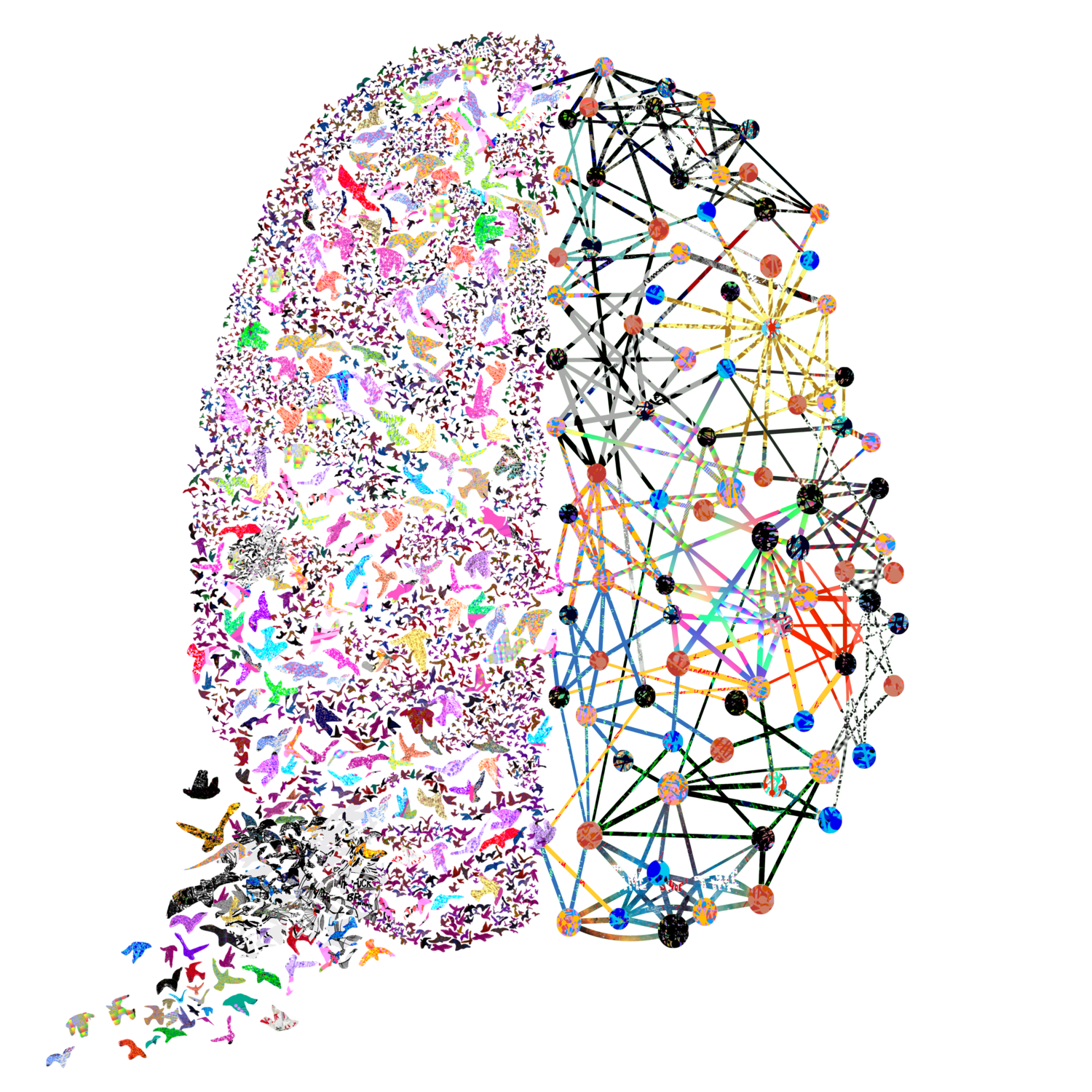
The cells of sleep
An interview with Dr Renata Batista-Brito, Albert Einstein College of Medicine.
The brain contains thousands of types of cells, but it is only in recent years that these have been brought into focus, thanks to new techniques that can distinguish them based on their functions, morphology, physiology and electrical properties.
Such fine resolution is essential to understand the brain, argues Dr Renata Batista-Brito, from the Albert Einstein College of Medicine. Her most recent research has uncovered a previously unknown role for a rare type of inhibitory neuron in the cortex.
She has shown that these cells, known as somatostatin and chondrolectin co-expressing cells (Sst-Chodl) cells, help initiate sleep. Until now, sleep was thought to be controlled solely by subcortical regions of the brain.
Renata spoke about her work at a recent SWC Seminar. In this interview, she discusses the journey to finding the function of these cells, the nature of sleep, and the importance of believing in yourself.
What led you to investigate inhibitory neurons?
I originally wanted to study the neocortex because, being one of the most developed parts of the brain, it might be the one that is most related to the questions I was first interested in as an undergraduate – questions of philosophy and of the mind.
I followed a winding path into neuroscience, via philosophy, biochemistry and genetics, and I got interested in inhibitory neurons during my doctoral research.
It’s a very simplistic analogy, but if you think of the brain like a city, where information travels along highways, inhibitory neurons are a bit like the rules, the traffic lights. They control the flow and speed of information in the brain. Without them, because everything is connected, you would have constant seizures. I became fascinated by these traffic rules as a graduate student – they were less well understood than excitatory neurons.
I then wanted to manipulate those cells during my postdoc to understand their role in behaviour, but that was really, really challenging. Manipulating cells from a systems perspective is complicated because each cell class we could target is comprised by many subtypes of cells that have different connectivity and function.
For instance, if you manipulate somatostatin-producing cells, you think that you're manipulating one cell type, but really, you're manipulating dozens types of cells, and they do different things, making it hard to come up with an understanding about their function.
Why did you focus on somatostatin and chondrolectin co-expressing cells (Sst-Chodl cells)?
When I started my lab, I really wanted to go after cell types that were less diverse.
I took a transcriptomic map of inhibitory neurons in the neocortex and decided there were three cell types that were non-diverse. Sst-Chodl cells are one of those.
I started with Sst-Chodl cells because the transcriptomic data suggested they were super conserved across species. They are also energetically costly. And they are weird because they are long-range inhibitory neurons.
Usually in evolution, if you have something that is rare, really conserved and energetically very costly to the system, you only keep it if it has a really important function. I wanted to understand - if these cells are really specific, do they have a specific function? I reason that if they are so specific and conserved they likely are important, why do we have them? I thought that must be something quite specific.
What was already known about Sst-Chodl cells?
Nobody had targeted these cells because nobody had the tools to specifically label them. It wasn’t possible to follow their activity. So nothing concrete was known, but it had been suggested by Thomas Kilduff and others that those cells might be relevant for sleep. In addition, given their long-range projections, Sst-Chodl cells would be well placed for coordinating synchronous activity during sleep across the cortex.
What are your headline findings?
The really strong finding is that these cells synchronise the cortex. They are active when our cortex is synchronised, particularly when we are drowsy or in non-REM sleep.
In addition, the activity of these cells is sufficient to mediate synchronisation. This happens even when an animal is active and running around. And we also show that activation of these cells across the entire neocortex promotes sleep.

Credit: Renata Batista-Brito
Were you surprised to find cells in the neocortex affecting sleep?
Having something that you do in the neocortex that allows the network to synchronise and facilitates an animal going to sleep, that's an interesting finding. I was not actually expecting to see this result, but we do see it consistently.
I think that these cells are working in the situation where you are really tired, the sleep pressure is strong, you have been awake a long time, and you need to go to sleep. Maybe these cells help to shut down the neocortex when you are under sleep pressure, thus allowing you to go to sleep, but at this point this is just speculation. I see these cells, potentially, as sleep need sensors in the neocortex. Sleep homeostasis is not very well understood, but it's very affected in most neurological disorders, especially the ones that involve the neocortex, and so these cells could be involved there too.
What is the most challenging part of your research?
Oh, this was such a difficult project! I mean, kudos to the postdoc and student in my lab who really believed that it was achievable. But the difficult part was really to put so many resources and so much effort into developing tools and collaborations to get this project initiated when you're dealing with such a small population of cells with such an unknown function. So that first leap of faith was the hardest thing. We might not have seen something that had an effect.
Believing one's rational instinct was the challenge. If these cells are there, and if they are so conserved across species, and if they remain in humans, they must be doing something fundamental. We didn’t know if we would have enough resolution to discover what that function was. And it was really hard to get funded for this project for this precise reason.
Sleep is such a universal behaviour, yet we still don't fully understand it. What do you think are the most important open questions in sleep neuroscience?
What is sleep for?! That is the first thing. I mean, there are a lot of theories. We spend 1/3 of our lives sleeping, on average. We function the worst when we are sleep deprived.
You can be food deprived for much longer than you can be sleep deprived. Without sleep, we are dysfunctional, we cannot remember things, and we cannot learn. But we actually still don't know what it’s for. I think the other question is, what are the different types of sleep serving?
We know that some sleep is regulated by the cycle of light, and that makes sense evolutionarily. You want to be awake when there's light because that's when you can be active, that’s when you can see. But it’s quite unsafe to be asleep, especially if you are prey. So there are complicated evolutionary pressures, but you can understand them.
But sleep homeostasis, the other model of sleep, is different. Somehow, you're measuring in your brain how long you've been awake, and when is the time that you can no longer be awake. You have to go to sleep or you die. It is that fundamental.
Why do we need that so, so much? We don't know.

Biography:
The Batista-Brito lab research interests focus on understanding how specific neuronal cell types, giving emphasis to GABAergic inhibitory neurons, and associated circuits mature and orchestrate the processing of cortical information related to behaviour. Our approach ranges from the molecular/cellular to the systems perspective by combining single-cell genetic profiling, mouse genetics, cell-type–specific manipulation of neuronal activity, in vivo electrophysiology, and behaviour. We have establish two major research lines:
1) We investigate how postnatal development of inhibitory function shapes the way sensory information is processed in the cortex, in the context of health and disease. Perception depends on the adaptive function of various cortical areas comprised of many types of cells, and synaptic connections that develop on a long timescale. During development, neural networks must grow from a state of zero connectivity to the precisely interconnected circuits characteristic of the adult brain. The activity of GABAergic inhibitory neurons during postnatal development is likely to mediate synaptic refinement, reducing synchrony and enhancing precision in the mature network. Accordingly, dysregulation of inhibitory neurons has been linked to several neurodevelopmental disorders. Addressing these questions will identify key developmental processes, elucidate fundamental mechanisms by which sensory information guides behaviour, and potentially provide new biomarkers for neuropsychiatric diseases.
2) We investigate the mechanisms by which contextual modulations are implemented in cortical circuits. We focus on contextual influences of global behavioural/arousal state (e.g. how alert am I?), sensory predictions (e.g. which stimuli do I expect?), and top-down attention (what is relevant to me?). We ask what are the essential neuron classes, giving emphasis to GABAergic inhibitory neurons classes, responsible for translating neuromodulatory signals into changes in sensory processing and perception. By focusing on the circuit mechanisms of contextual modulation operations, we may begin to understand how mutations in GABAergic inhibitory neurons and alterations in neuromodulatory signaling lead to specific deficits of information processing in neuropsychiatric disease.


